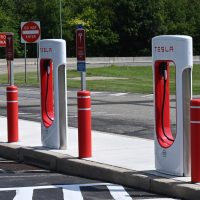As electric SUVs become more popular and affordable, many people are considering making the switch from gas-powered vehicles to electric. But what makes the transition even easier is taking advantage of government tax credits.
These tax credits can help offset some of the cost associated with buying and owning an electric car, making it much more affordable.
Let’s take a closer look at how government tax credits work and why they make going electric easier on drivers’ budgets.
What Are Government EV Tax Credits?
Government tax credits are incentives offered by the federal government to encourage an individual to purchase or lease an electric car and use cleaner energy sources. This is a win-win for us all and the environment too.
This isn’t a giveaway: Tax Credits helps can help countries achieve carbon limits
By offering these incentives, the goal is to reduce emissions from traditional gasoline-powered cars. Tax credits then encourage drivers to purchase more fuel-efficient vehicles like plug-in hybrids or all-electric cars.
Many countries across the globe have signed on achieve lower carbon emissions in the coming years. There are many to do this and since non-commercial vehicles do contribute the overall greenhouse emissions – why not start there?
The amount of money available in these tax credits can vary depending on the type of vehicle you choose and where you live.
How Do Government EV Tax Credits Work?
Most of us run away from anything with government in the name – for fear of the legal red tapes that usually comes along. However, this time there is no need to fear, you won’t get dinged on your income tax – for example.
How do I qualify for a government electric vehicle (EV) tax credit
To qualify for a government EV tax credit, you must first purchase or lease an all-electric or plug-in hybrid vehicle that meets certain requirements set by the federal government. Generally speaking, these vehicles must be able to travel at least 25 miles on electricity alone before needing any additional fuel source (like gasoline).
So I have purchased my EV. How do i claim my $7,500 credit?
Once you have purchased or leased your eligible vehicle, you may then be able to claim up to $7,500 in government tax credits – depending on where you live – which will help offset some of the cost associated with purchasing your new car.
The Benefits of Government Tax Credits
The credits your local municipality or federal governments offer will help to accelerate to the push for full electrification of transportation. That is all good, but what about middle or lower income individuals? Can they join in too?
Tax credits are also a way for lower income drivers to benefit
Tax credits make transitioning to electric cars much easier for drivers who are already strapped for cash but still want to make a difference when it comes to reducing their environmental impact.
With so many different types of vehicles available today – from mid-size luxury SUVs like Maserati’s Grecale Folgore to smaller compacts like GM’s Bolt (EUV) – there are plenty of options available that accommodate different lifestyles and budgets.
With government tax credits helping offset some of those costs, it makes going green even more attractive!
Conclusion:
Making the switch from a traditional gasoline engine car to an all-electric or plug-in hybrid vehicle is becoming increasingly easier. This is thanks in large part to government tax credits that can help offset some of those costs.
Taking advantage of these incentives can make transitioning much smoother on your budget. While still allowing you access to clean energy transportation options that are both efficient and cost-effective!
Whether you’re looking for an e-SUV like Maserati’s Grecale Folgore or something smaller like GM’s Bolt (EUV), there’s sure to be something out there that fits your needs perfectly and with a little help from Uncle Sam, it won’t break your bank either!
Main image courtesy: Stellantis



